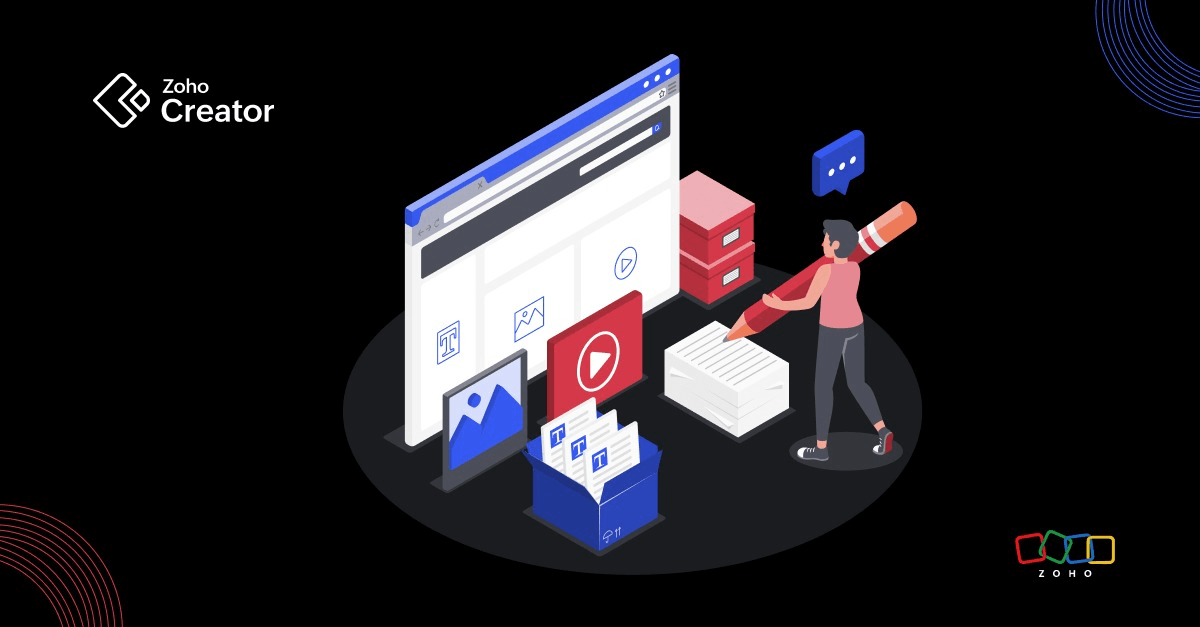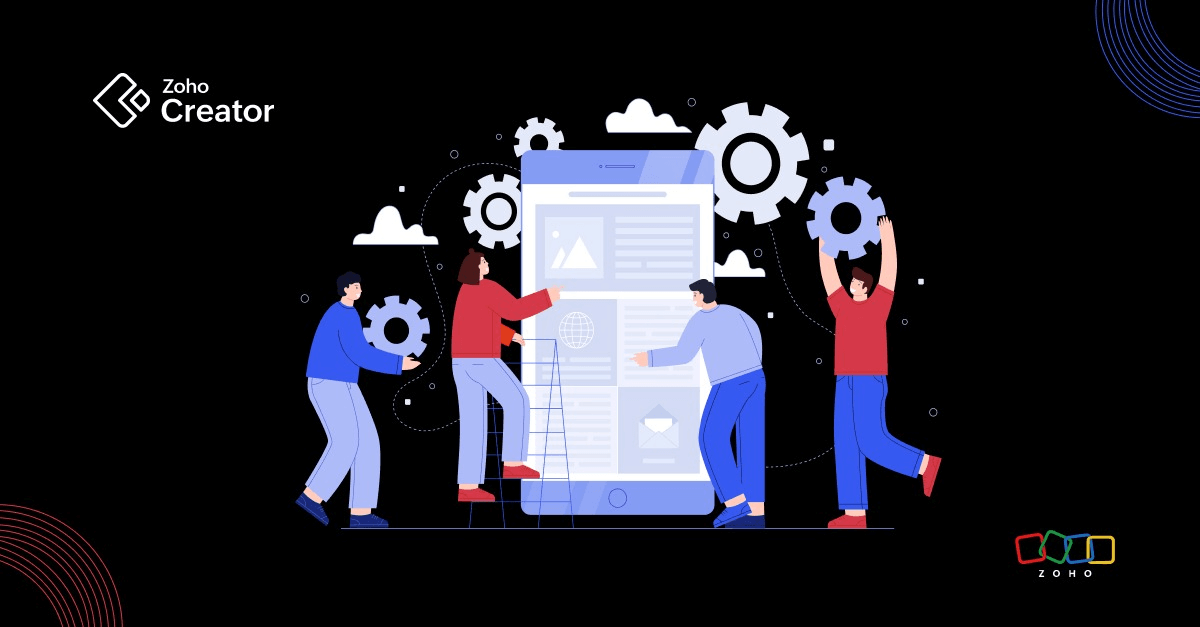- HOME
- Know Your Tech
- How low-code can reduce technical debt
How low-code can reduce technical debt
- Last Updated : April 20, 2023
- 833 Views
- 6 Min Read
Technical debt, in software development, refers to the eventual consequences of poor or evolving software architecture and development within a codebase. The concept was first described by Ward Cunningham, who compared accumulating technical debt to monetary debt. It can be thought of as work that needs to be done before a particular job can be considered complete.
One example is where a developer creates an application that will work on two separate databases, but decides just to use one database since it's easier to manage and solves the purpose for the time being. It may be great until a requirement arises where the app has to be integrated with another app, at which they realize that the data needs to be stored or synced with both databases at once.
This results in technical debt—as what works well today can cause problems for future software development efforts.
Put more simply, technical debt in software development is anything that slows down your ability to get things done over time.
How is technical debt accrued?
Technical debt starts accumulating when code is written that does not meet design standards or perform optimally and continues to accumulate until the undesirable consequences of the poor code become apparent. This means that, as a job goes on, it will take more and more effort for subsequent developers to work with the codebase. The consequences can include a high degree of technical debt, reduced team velocity, and increased time to market for new features.
When engineers are left to their own devices, they often produce software with an over-abundance of code. This not only makes it harder to work with the existing codebase, but also increases the likelihood that there are bugs in the system. Additionally, when software is developed in a traditional coding language or platform, it can be difficult to keep track of dependencies and other interconnections between modules and systems. This can make it even more difficult to update and debug code.
The opportunity cost of rewriting the code is often less than the cost of fixing or working around the problems caused by technical debt in an existing system, but that doesn't mean you should ignore your technical debt.
How can low-code help to reduce technical debt?
Low-code platforms (LCP) provide an automation layer between the business logic and the underlying technology. With a low-code platform, developers are able to write production-ready applications faster than with traditional coding languages or platforms. This automation helps reduce the consequences of poor programming, speeding up development time and greatly increasing productivity.
With LCPs, companies are able to reduce their technical debt by allowing programmers to create quick prototypes or minimum viable products (MVP) that can be modified easily. The creation of an MVP allows companies to assess customer requirements before they decide on long-term strategies regarding their IT architecture. This provides them with much greater flexibility in their software development and reduces costs drastically.
The process of developing software using traditional coding languages or platforms can sometimes be complicated. This is because there are so many different elements that have to be combined and tested before an application can go live.
A common issue among software developers is that they often leave their code as it is when adding new features. This can lead to an accumulation of technical debt, which can have numerous negative consequences including:
The application becomes harder to update, debug, and expand as it grows.
It can be hard to figure out why the code doesn't work properly or how to fix errors quickly (which may lead to more bugs).
In contrast, low-code platforms usually don't require any additional infrastructure or software (other than the platform itself). This also means they are fast and easy to deploy, so users don't have to wait a long time before their application is ready for the market.
Resolve recurring issues
It's very easy for large projects to get complicated quickly, especially if they have a lot of dependencies or long-running processes. With low-code platforms, there's usually an easy way to perform version control and test new code in parallel to the existing system, without disrupting it.
It often happens that traditional coding languages or platforms involve a lot of boilerplate code that works with numerous systems. This redundancy not only makes the code harder to comprehend, it can also make development slow, expensive, and prone to bugs. An LCP usually streamlines the code that's used to interact with various systems or perform certain functions.
Speed up delivery
When software is developed using traditional coding languages or platforms, it can take a considerable amount of time to produce a working solution, because there are so many different elements that have to be implemented by hand.
In addition to reducing the total number of lines written, LCPs often come with tools to help speed up development. For example, they may have features that allow developers to create their own components, which can be reused in a number of different applications. This not only saves time and money, it also makes it possible to improve the quality of an application without having to start from scratch.
Reduce app development costs
The cost of developing an application using traditional coding languages or platforms can be prohibitively expensive. This is primarily because there are usually several elements (hardware, software licenses, and human labor) that have to be combined in the right way in order to produce a working solution.
This creates a major issue for small companies that are looking to enter the market or gain exposure. They often don't have the resources needed to invest in a custom application, but struggle to compete with larger corporations due to their lack of brand recognition and reach.
In contrast, low-code platforms are usually cheaper, because they require less infrastructure and other resources to start. They're also easier and faster to deploy, so this reduces the amount of time needed for an app to go live.
Gartner predicts that the use of tools and methods, such as visual programming, will increase considerably during the next few years. Thanks to artificial intelligence, we will see semi-automated systems or self-optimizing, machine-learning algorithms generating new code from data models.
However, the further automation of software development will not be possible without real changes in management principles and processes for it to become a key business enabler.
How is low-code going to change software development?
Low-code is already revolutionizing software development today, allowing businesses with little or no capability in this area to develop their own cloud-based apps that can then be deployed rapidly on mobile devices. It's a means by which even small companies can create compelling products at low cost while freeing up developer time to focus on more complex features.
With the use of artificial intelligence (AI) and machine learning (ML), this revolution is likely to speed up even more in the future, with developers frequently encountering new code that has been created by AI systems.
When should you start using a low-code platform?
It is hard to predict when low-code will become a necessary part of your software development strategy, because its use can be very site-specific. The decision depends on which type of system you'll need, and how much time and budget you have available for prototyping and testing. If you already have a large IT team in place but wish to create apps quickly, or choose an alternative technology such as BI or BPM, it may prove too complex without assistance from a low-code development partner.
Low-code platforms lower the entry barrier into app development
Using low-code application development platforms allows you to reduce time to market, speed up new feature releases, reduce tech debt, and improve the efficiency of your app development. This is because low-code platforms provide developers with a more efficient way to update existing systems without having to rewrite all of their code. They're also less expensive than traditional coding languages or platforms, which often require expensive software and hardware to run.
 Pranesh
PraneshPranesh is a serial entrepreneur and the Founder of Studio 31, a 12 year old, deep tech enabled, wedding photography and film company that has been recognized by many publications for its zero inventory model and unique culture in the unorganised sector.
Zoho Creator has helped Studio 31 redefine its business model by automating over 37 processes and save three hours every single day. He is also a growth consultant for Zoho Creator and helps the team address real-world challenges from a customer's point of view.



